





Self-Explaining Road (SER) Concept
The Self-explaining Road (SER) concept originated from the Netherlands. The Dutch Sustainable Safety principles cover “predictability”. The concept aims at delivering a road environment which matches users’ expectation and in turn triggers safer behaviour, speed, maneuvers, and interaction with other users. Limiting road types and consistent design elements of layout, road furniture and signing are important concepts of SER.
Design of the road environment based on SER should be aligned with expectation. The layout of road elements crossings, road sections, curves should be unique behaviour for a particular road category. On the other hand, drivers may be surprised by unexpected conditions and fail to react correctly and in time. This could be the case for an isolated sharp curve on a road with continuous gentle alignment. It is recognized that users should always exercise prudence in using the road. Yet they should not led into a trap due to design elements which are contradictory, misleading, or confusing.
Road design should be clear and obvious to users. To achieve this, adequate but not excessive visibility should be available so that drivers can see the road conditions by themselves. This would also reduce the need for warning signs, markings and engineering measures.
Based on this concept, the road hierarchy in the Netherlands falls into a limited number of distinct road types, namely main routes, distributor roads and residential streets. Each of these road categories have distinct design requirements which clearly define the appropriate speed and behaviour for users. The Netherlands also pioneer a distinct design of secondary rural roads of 60 km/h speed limit. These two-way roads have a single lane with wide shoulders on either side.
The SER concept in its broader sense is extensively deployed in road design for safety. Examples include:
Safe speeds for local communities
Road design treatments such as lane narrowing, increased landscaping, community islands to limit forward visibility, removal of road markings, village gateway entries and traffic calming can all be used to create a visually distinct road environment that encourages drivers and riders to naturally adopt behaviours and safe speeds that are appropriate for local communities.
Highway Alignment
In the design of rural motorways, a smooth and flowing alignment consistent with high speed travel is preferred. However, such alignments should be avoided for undivided highways as they tend to induce excessive traffic speeds and can result in dubious conditions for overtaking. Similarly, where a highway passes through built-up areas, it is not desirable to have a straight or smooth alignment. Drivers are more likely to reduce speed and adapt their behaviour if the alignment contains interruptions in conjunction with a strong change of the roadside character.
Curves of Diminishing Radius
Drivers approaching a curve will generally reduce speed to level consistent with the curve radius. If the first curve is contiguous with a much tighter curve in the same direction, the driver could be surprised and fail to react in time. Such alignment may exist on older routes and will require special treatment.
Grade-separated Interchange
At the point drivers enters or exit a high speed mainline, the change in road environment and design speed should be obvious. Problems can arise for lane drops where a mainline traffic lane becomes an exit lane. Drivers may change lane too late or else approach sharp curves at excessive speeds. On high speed roads, unusual merges and diverges can surprise drivers. Tangential exits are those which follows a straight line whereas the main road enters a curve. This may contradict drivers’ expectation and inadvertently enter the exit lane.
Long Steep Grade
Long steep grade is a potential serious road safety problem on motorways and other roads of high design speeds. Heavy vehicles are susceptible to brake failure leading to catastrophic consequences. In order to increase drivers’ awareness of long steep grade, French design guidelines advise the introduction of curves with decreasing radii at the start of descents. Moderate curves are encouraged along the descent instead of straight or gentle curves. Furthermore, steep gradient should be introduced at the start and not progressively. The vertical profile of descents should not be in steps to avoid drivers re-accelerating on short sections of gentler gradient.
Transition from Motorway to arterial roads
A strong change in the character of the road and roadside is needed for drivers to adapt to different driving conditions at lower speed. This is attained by a transition road section together with signing.
Roadside Linear Features
Common linear features along a road include ditches, lighting columns, utility poles etc. If a highway turns through a bend or passes a roundabout while these features continue in a straight line, drivers could be misled and fail to turn or slow down.
The Star Rating Demonstrator is a freely available tool with the iRAP online software, ViDA. With the Star Rating Demonstrator, it is possible to explore the impact that this Safer Roads Treatment has on risk.
Treatment Summary
Case Studies
Related Images
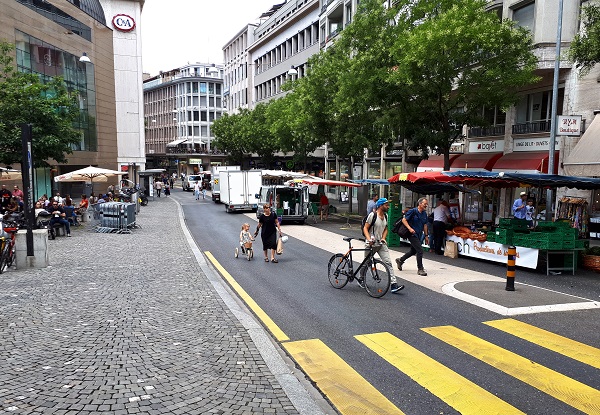 Pedestrians crossing a slow speed road. Photo credit: RdA Suisse
Pedestrians crossing a slow speed road. Photo credit: RdA Suisse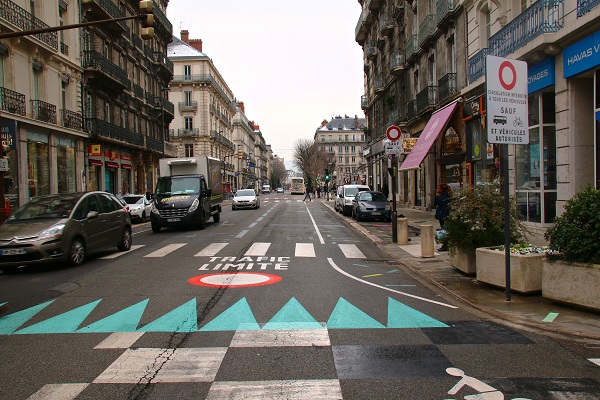 A slow speed pedestrian crossing. Photo credit: RdA Suisse.
A slow speed pedestrian crossing. Photo credit: RdA Suisse.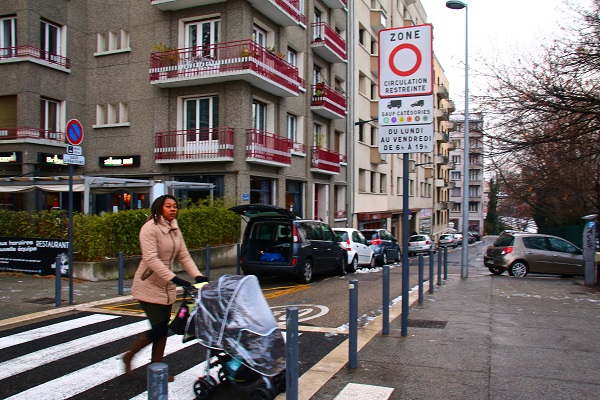 A mother crossing the road with a stroller. Photo credit: RdA Suisse
A mother crossing the road with a stroller. Photo credit: RdA Suisse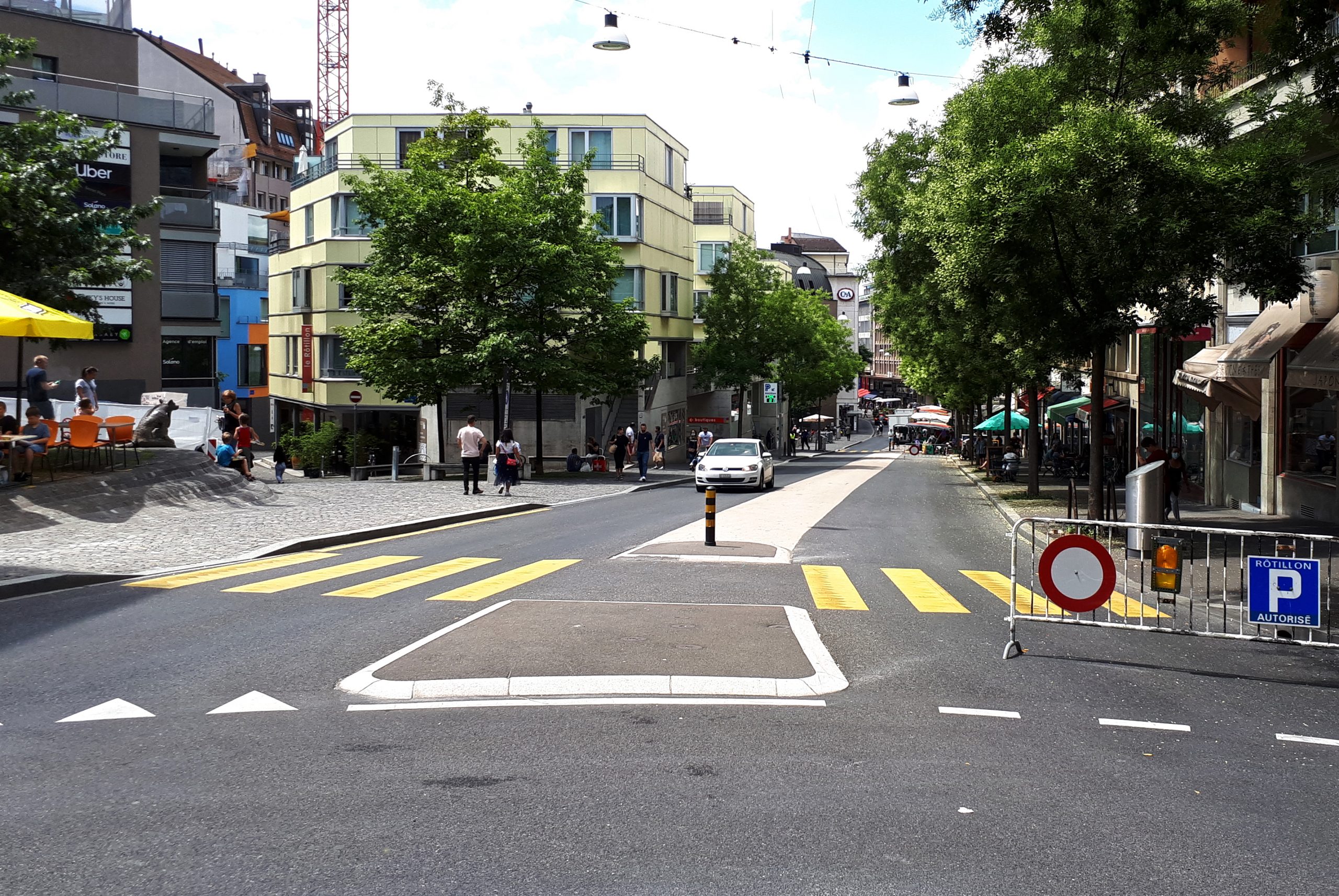 Pedestrians crossing the road, with traffic calming and pedestrian crossing. Image credit: RdA Suisse
Pedestrians crossing the road, with traffic calming and pedestrian crossing. Image credit: RdA Suisse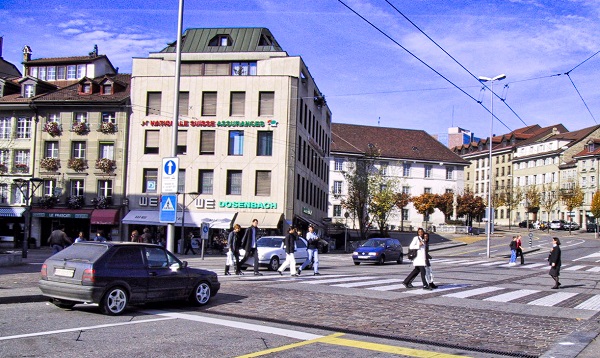 Pedestrians crossing the road, with traffic calming and pedestrian crossing. Image credit: RdA Suisse
Pedestrians crossing the road, with traffic calming and pedestrian crossing. Image credit: RdA Suisse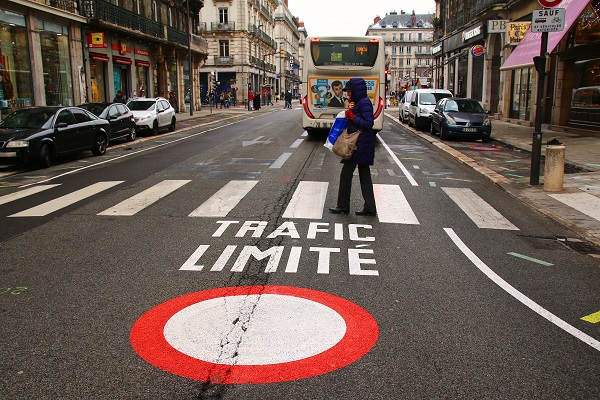 Pedestrians crossing the road, with traffic calming and pedestrian crossing. Image credit: RdA Suisse
Pedestrians crossing the road, with traffic calming and pedestrian crossing. Image credit: RdA Suisse










